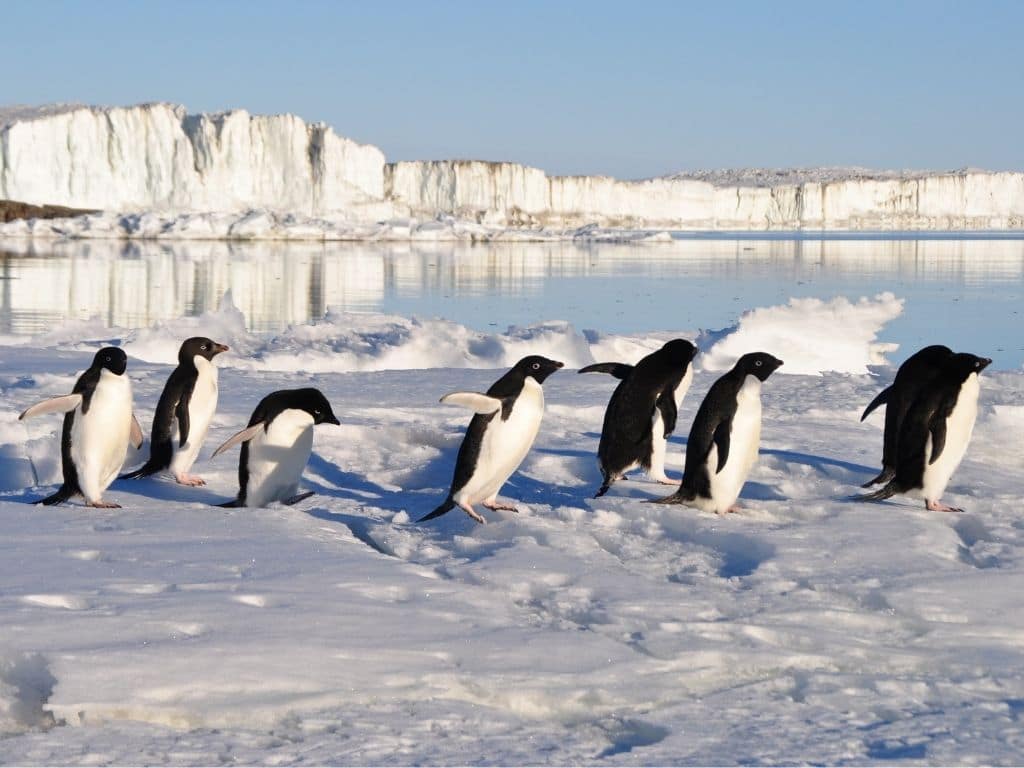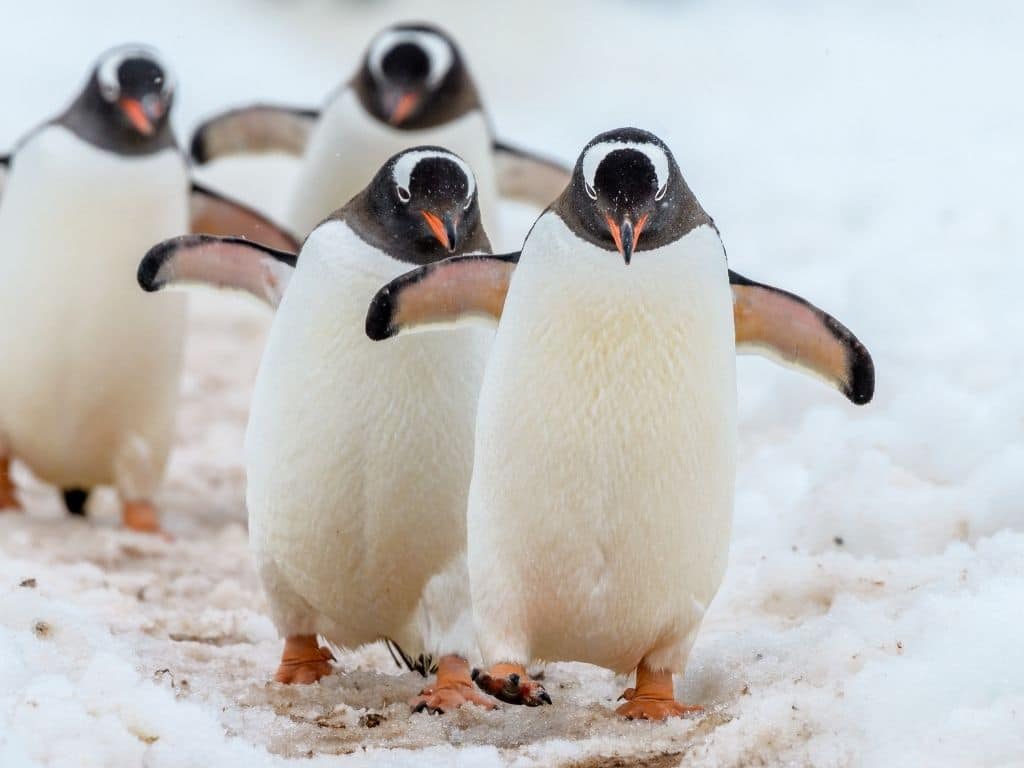Climate change, overfishing, diseases, and habitat destruction are threatening penguins, charismatic aquatic birds that live primarily in the Southern Hemisphere. To celebrate World Penguin Day 2024, which every year falls on April 25, here are 6 interesting facts about endangered penguin species and the main threats to their survival.
—
6 Facts About Endangered Penguin Species
1. Penguins thrive in varying climates
Penguins’ inability to fly makes it challenging for them to defend themselves from attacks by predators. Thus, their habitats include remote coasts in continental regions, far away from threatening animal hunters, as well as oceans. These aquatic birds are adapted to living at sea, where they can spend months at a time. While they live primarily in the Southern Hemisphere, from South America to New Zealand and Australia, two species – the threatened African and the Galápagos penguin – can be found north of the equator.
2. These flightless birds have evolved to ‘fly’ underwater
Penguins might not be able to fly but they thrive underwater. Contrary to most birds that have hollow, air-filled bones, the strong bodies of this particular species reduce their tendency to float, making them much easier to swim. Their bodies have also evolved in ways that protect them from the freezing cold Antarctic waters. While their thick feathers keep them warm, a gland near the base of their tail provides them with waterproof oil, which they spend hours covering their body with before swimming.
You might also like: 11 of the Most Endangered Species in the Ocean in 2024
3. Apart from being excellent swimmers, penguins are also great walkers
Penguin feet are incredibly strong, allowing them to walk the distance of two marathons on ice to get to their breeding groups. They developed incredible muscles that can keep their body just above freezing temperatures, protecting them from the cold. Penguins’ feet are also precious allies underwater, as they allow them to change direction and brake.

4. Penguins are the second-most threatened bird group in the world
Despite being legally protected from hunting and egg collecting by the 1959 Antarctic Treaty, according to the International Union for Conservation of Nature (IUCN), nine out of the 18 listed species have been deemed endangered and vulnerable while three are considered near threatened. This makes them one of the world’s most threatened birds, second only to the albatross. Unsurprisingly, some of the most imminent dangers penguins face today are global warming and changing oceanic conditions; most species do not have the rapid adaptation skills to survive climate changes. Aside from sea level rises, direct human activities such as oil spills and other oceanic pollution are all threatening to destroy entire colonies and affect future generations. Furthermore, because of humanity’s unsustainable and irresponsible fishing practices, thousands of seabirds face starvation; overfishing is contributing to the disappearance of most of the fishes that penguins feed on like sardines and anchovies.

5. The African Penguin is among the most endangered penguin species
Mainly found in Southern Namibia and the South West coast of South Africa, the population of African penguins – also called black-footed penguins – has declined by about 70% in three generations, from roughly 82,000 to just about 25,000 individuals. Today, only 2% of the species’ early-20th century population remains. Among the biggest threats to this penguin species are energy production-related activities – such as oil and gas drilling – and mining as well as overfishing and unregulated harvesting of aquatic resources. Organisations such as the South African Foundation for the Conservation of Coastal Birds (SANCCOB) work tirelessly to help this increasingly vulnerable species survive and educate the local population on ways to improve the state of the environment.
6 Over 90% of Emperor Penguins could be wiped out by 2100
Climate change-triggered melting of sea ice in Antarctica is taking a heavy toll on emperor penguins and could wipe out entire populations by as early as 2100, new research suggests.
Classified as one of Antarctica’s most vulnerable species, emperor penguins require sea ice attached to solid land between April and January to breed. This makes them extremely vulnerable to rapid sea ice loss in the region, which reached record levels in the spring season of 2022.
According to the study, record low sea ice in 2022 coincided with the first-ever recorded large-scale breeding failure of emperor penguins. Researchers found that, of the five breeding sites in Antarctica, “all but one experienced total breeding failure after sea ice break-up.” They argue that over 90% of the species colonies will be “quasi-extinct” by 2100 if current warming rates continue.
You might also like: How Many Endangered Species Are There?


















